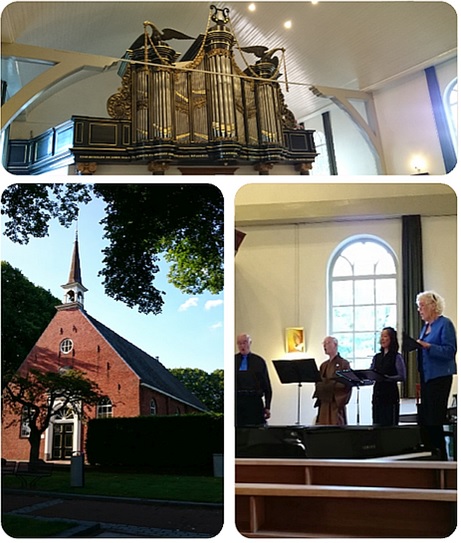In this issue:
The Fish, Conch, Jade Center, and Great Ocean
This is the third and final part of a series of articles. The first part was published in the February newsletter, and the second in April. The complete article can be found here;a Dutch version is available here.

THE FISH
In the symbolic representation of the spiritual nature of the human body, the two fish represent our two lungs. It is said that fish never sleep, and perhaps this is why they are used to represent the lungs, which also never rest. The spiritual process of re-harmonization of our karma with the Eternal can be likened to the physical assimilation process that takes place in the lungs, where carbon dioxide is replaced by oxygen: in the process of spiritual re-harmonization, we offer up (release) our confused karma, so that the purity of the flow of the Eternal's Compassion and Wisdom can be taken in and replace it. Like our breathing, the training that makes this re-harmonization possible is an ongoing process: as Rev. Master Jiyu explains in How to Grow a Lotus Blossom, in training we continually “go in and out”—turning within in pure meditation, and then going out into daily activity. And this process can be compared with the continual process of inhalation and exhalation.
THE CONCH
Between the lotus flower and the two fish is the conch shell. The conch shell represents the throat, where our larynx is located—the place from which our voice emanates. The horn-like sound that can be produced by blowing through a conch shell (or “shell horn”), can be likened to the “Voice of the Eternal”, as it is a pure and powerful sound that resounds throughout the world. Likewise, when our karmic blocks are being converted and their inherent purity becomes apparent, our voice and speech will become a vehicle for the Voice of the Eternal that reverberates into the hearts of others. “Giving voice to the Dharma” is an important phrase in Buddhist scriptures. In its wider meaning, this phrase not only applies to our speech but to all our actions of body, speech and mind as well. It is through the purity of our intention, speech and deed that the purity of the Dharma can manifest in this world and become accessible to others.
THE JADE CENTER
Beneath the conch, and between the fish, is an emerald green area, the “jade palace,” which represents the hara. The hara is the upper abdominal area. In Buddhism, the hara is thought to be the place where our spiritual Center dwells. Jade was regarded as the most precious stone in ancient China and was known as the “essence of heaven and earth.” It represents purity and moral integrity. Because of its hardness, it also represents That which is indestructible, eternal. These are all qualities of the Buddha Nature. The term “jade palace” suggests a dwelling place, in this case the dwelling place of the Buddha Nature. It implies the presence of the Buddha Nature within every being. This presence has always been there and always will be there: It is our very innate True Nature. We are born with the Buddha Nature and so we have the potential for Buddhahood. And because of this, we can turn to the Buddha Nature and listen to It in meditation; we can be guided and helped by It in our training. And it is by our very meditation and training that we allow It to manifest fully into the lotus blossom of enlightenment.
THE GREAT OCEAN
Although it is not generally regarded as a symbol, the blue field behind the stack of symbols can be thought of as the Great Ocean of the Unborn. For our training and our life do not take place in a vacuum. In fact, our life is completely embedded in the Great Ocean of the Unborn. Whether we know it or not, we are an integral part of It, and we are always loved, nurtured, prompted and supported by It. We can always trust It, take refuge in It, and train so as to live in harmony with It.
NEWS OF THE TEMPLES
North Cascades Buddhist Priory
In recent months we have been using a day-and-night stationary camera to photograph wildlife on the Priory property. The Priory property includes forest, riverfront (Nisqually River), and wetlands. The camera has been set up to take short videos (five to ten seconds). We have compiled a number of these videos into longer videos, of which there are now four. These videos are posted on YouTube. The YouTube channel has the name of the non-profit land trust established by the Priory to manage its property. The name is “Kannon Forest Trust.”
Here is a link to the YouTube channel:
https://www.youtube.com/channel/UCsiowmxLtOX-OkIG8zsKULA
Westerwolder Dharma Toevlucht
On June 14th, Rev. Hector and members of the congregation joined the local vocal quartet—Wiltsangh—in a concert of religious choral music. The concert was performed in the Protestantse Kerk van Muntdendam in the nearby town of Muntdendam. Included in the program of classic and modern composers were four recent compositions by Rev. Master Koshin, which were performed publicly for the first time. The concert was attended by nearly fifty people and was well received.
Rev. Master Koshin’s choral pieces that premiered at the concert were: “As Rivers and Streams,” “The Flower Garland of Existence,” “Wind and Leaves,” and “I Ask, ‘Who Is The Believer?’” A couple weeks after the public concert the singers gathered in another church in nearby Wildervank, where the pieces were recorded by studio professionals.
We hope to be able to make the recordings available in the near future.

